Finding plants that survive slightly colder winters and shorter growing seasons can be frustrating. However, the good news is that there are more options than you may think! So, if you were searching for shrubs that will thrive in your zone 5 shade garden, look no further.
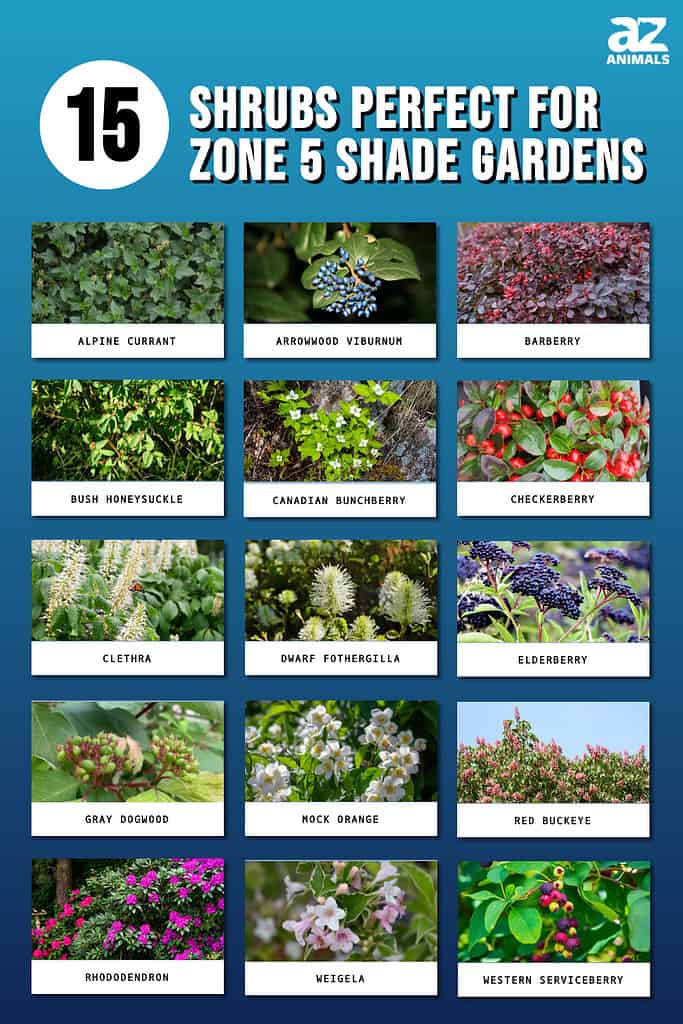
We have curated a list of beautiful shrubs to help you get started. Below are fifteen shrubs that will compliment your zone 5-yard or garden.
Let’s dive in.
1. Alpine Currant
Alpine Currant (Ribes alpinum) is native to Russia and Northern Europe. This stunning shrub can tolerate long periods of shade and drought. It grows up to 6 feet tall with a similar spread and is best used as a hedge or a border.
But don’t let its name fool you. Not all berries it produces are edible. The fruit growing on female alpine currant shrubs cannot be eaten.
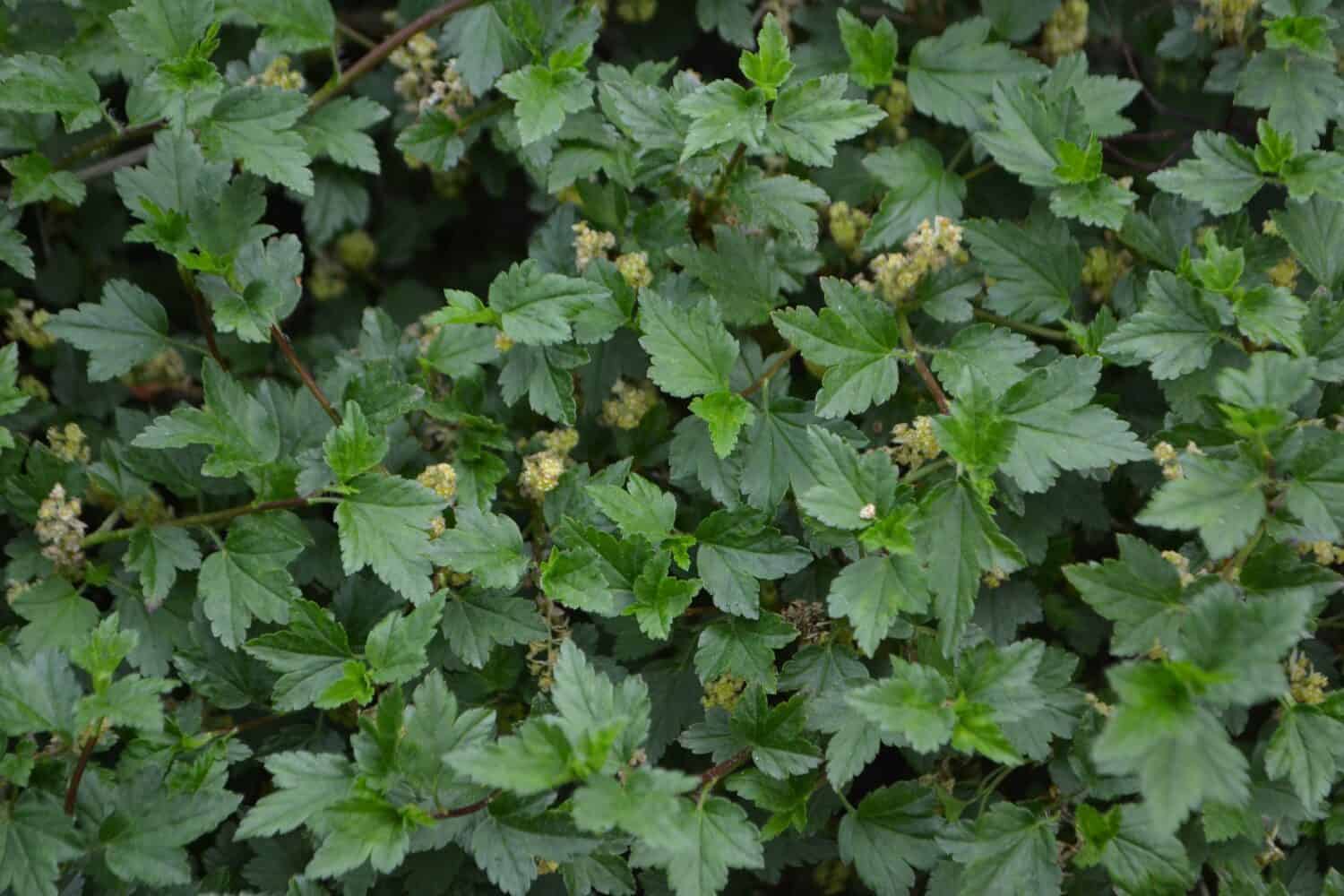
Alpine currant shrubs have distinctive leaves and beautiful fruit.
©Edita Medeina/Shutterstock.com
2. Arrowwood Viburnum
Birds and bees love the white flowers that bloom on the arrowwood viburnum (Viburnum dentatum) every summer. It is native to northern sections of the United States. Due to its size, it is best used as a hedge. This shrub can grow up to 10 feet high and wide. It tolerates partial shade and is winter hardy.
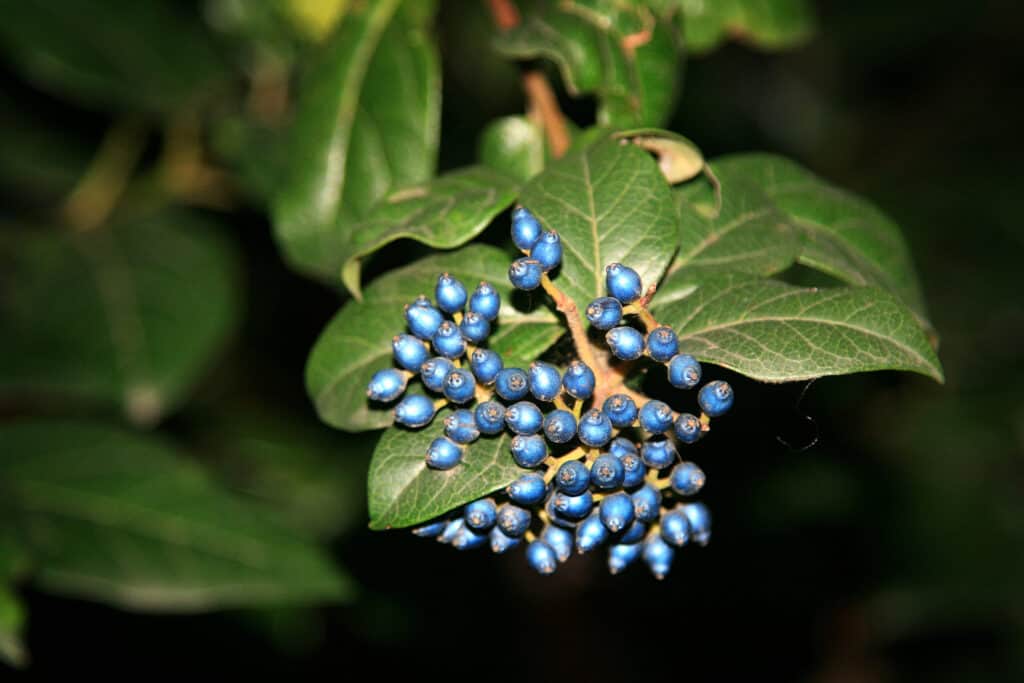
Viburnum dentatum is cold hardy and thrives in partial shade.
©photosbelkina/Shutterstock.com
3. Barberry
Barberry (Berberis spp.) is a dense shrub that does well in partial shade and wet soil. Full-size varieties can get up to 48 inches in height. However, dwarf varieties that only grow to two or three feet tall are available. Speak with your local nursery to discover the right cultivar or species for your space.
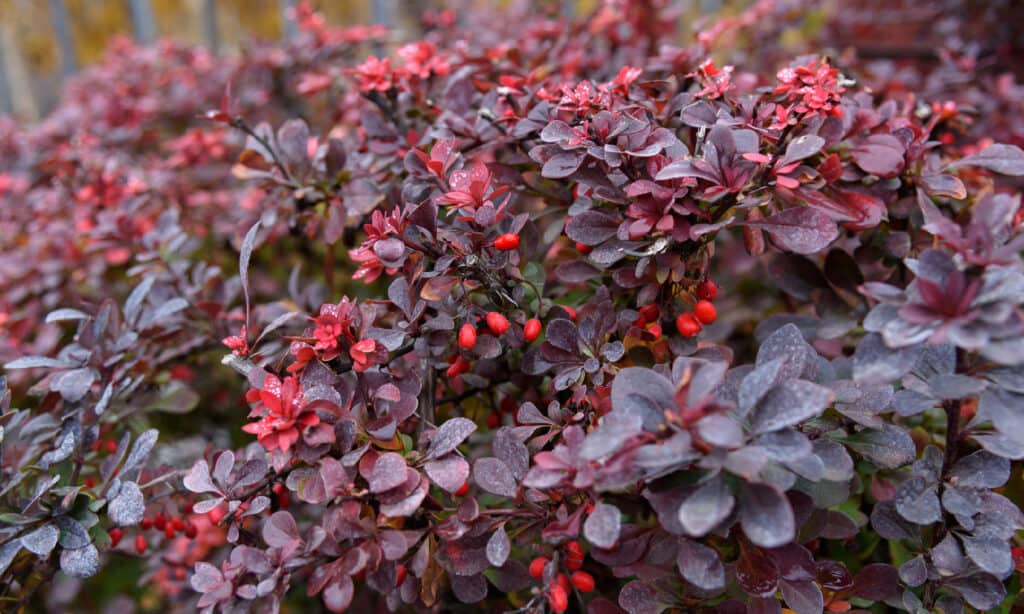
Barberry is a dense shrub that does well in partial shade and wet soil.
©iStock.com/Oleg Kodola
4. Bush Honeysuckle
The bush honeysuckle (Lonicera tatarica) is considered a shrub despite its height. These plants can reach up to twelve feet tall! This plant is native to Asia, and its flowers have a delightful aroma. It thrives in partial shade. However, check with your local extension office before planting since many states consider it invasive.
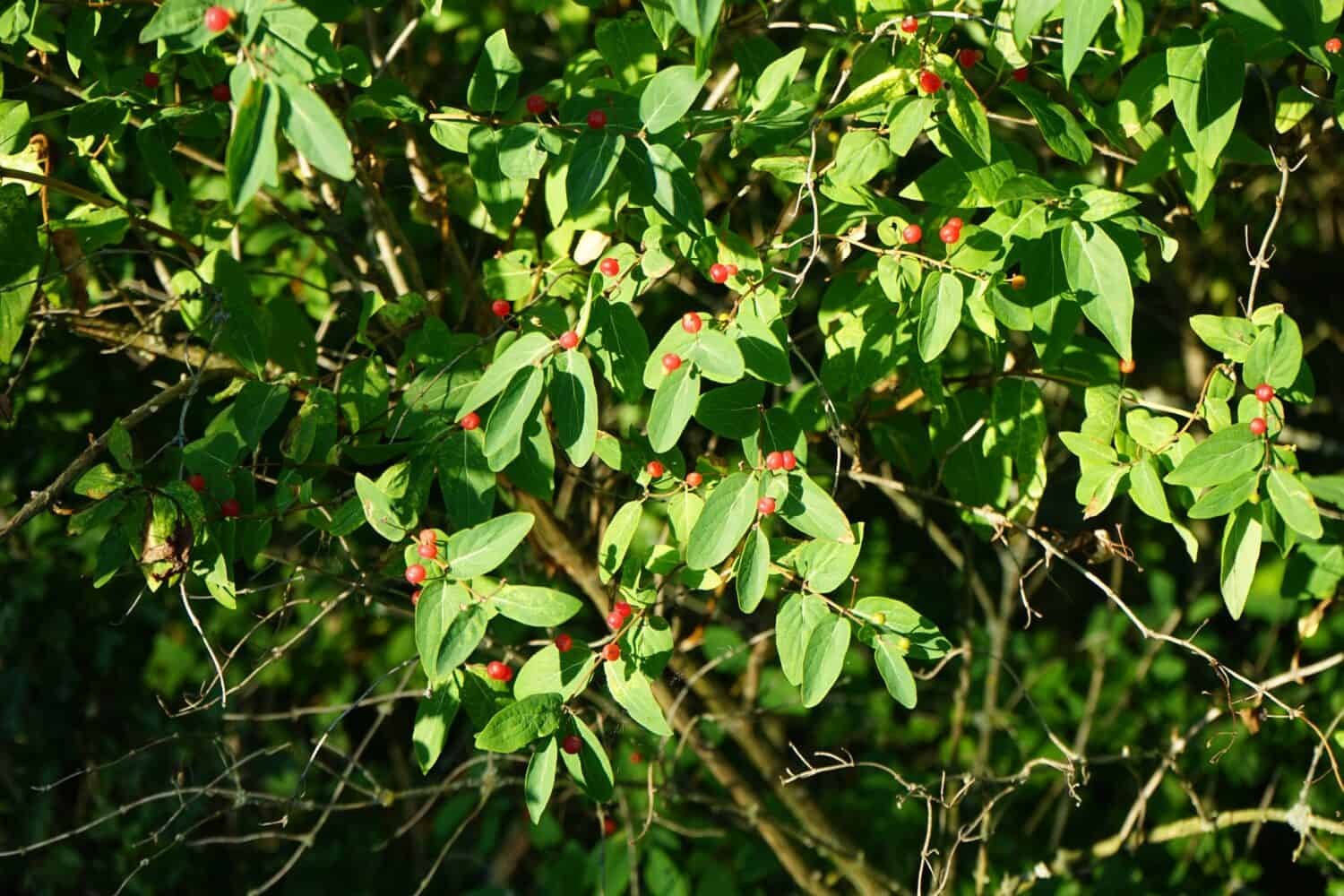
Bush honeysuckle is considered invasive in many regions. So check before you plant!
©crystaldream/Shutterstock.com
5. Canadian Bunchberry
Look no further than Canadian bunchberry (Cornus canadensis) if you need some ground cover. This low-growing plant tops out around nine inches high but has a decidedly widespread. It prefers partial shade, attracts pollinators, and is deer-resistant.

The Canadian bunchberry offers great ground cover.
©iStock.com/cpjanes
6. Checkerberry
Checkerberry (Gaultheria procumbens), also known as wintergreen or Eastern Teaberry, thrives in partial to deep shade. This ground cover doesn’t grow to more than eight inches high but spreads as far as one foot. Its berries attract wildlife, and its leaves get used to make wintergreen oil, which is used to flavor things like gum and toothpaste.
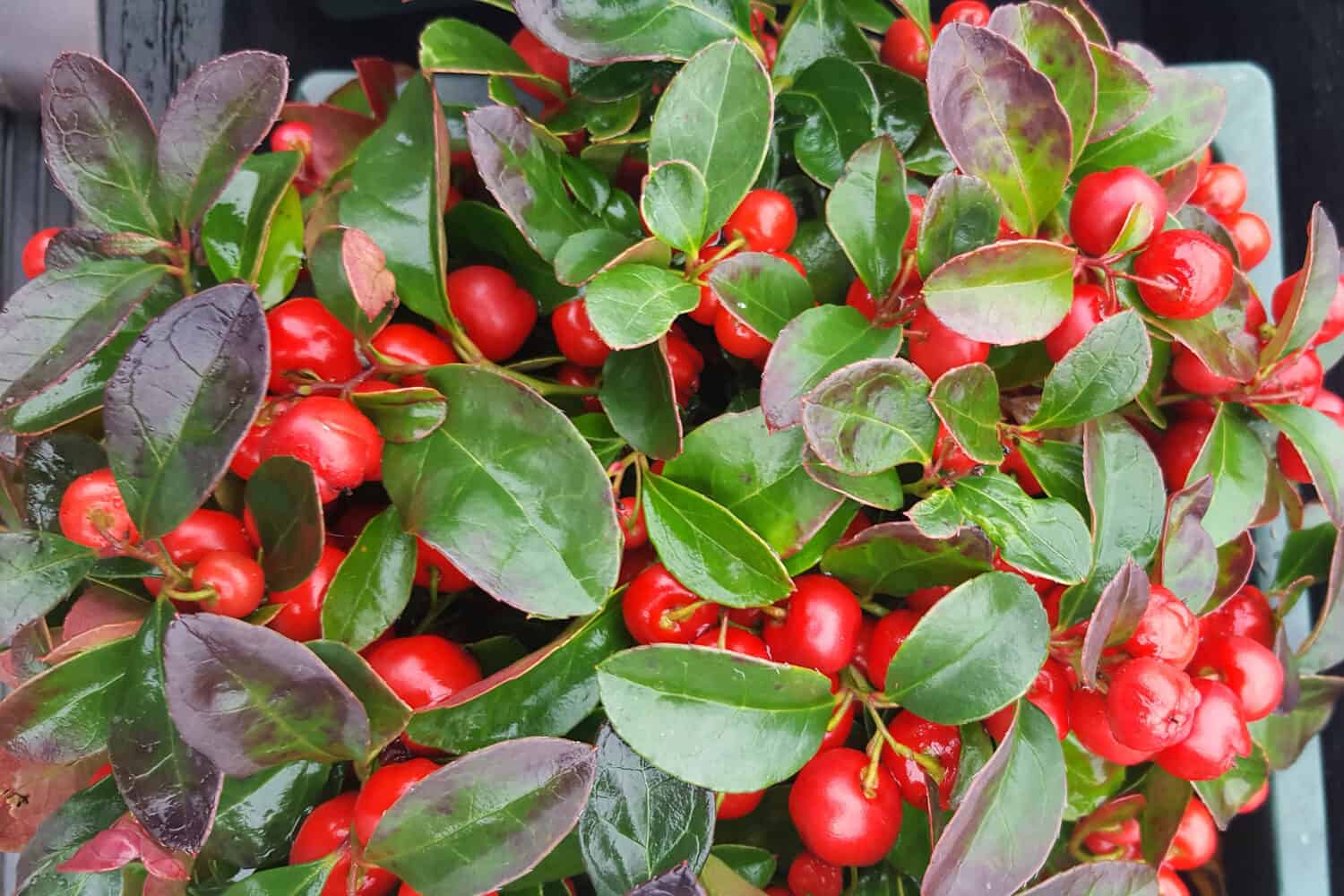
The dark green leaves and bright red berries on
Gaultheria procumbensput on a stunning show.
©Roel Meijer/Shutterstock.com
7. Clethra
Clethra (Clethra alnifolia) is a medium-sized shrub native to the Southern and Eastern United States. Its fragrant, showy flowers attract pollinators and birds. And, since this plant reaches up to eight feet tall, it makes a fantastic hedge.

Since Clethra reaches up to eight feet tall, it makes a fantastic hedge.
©Lana B/Shutterstock.com
8. Dwarf Fothergilla
This slow-growing shrub is native to the Southeastern United States and makes a fantastic hedge or barrier. The dwarf fothergilla (Fothergilla gardenii) reaches up to three feet high and four feet wide. In the spring, it develops lovely white blossoms.
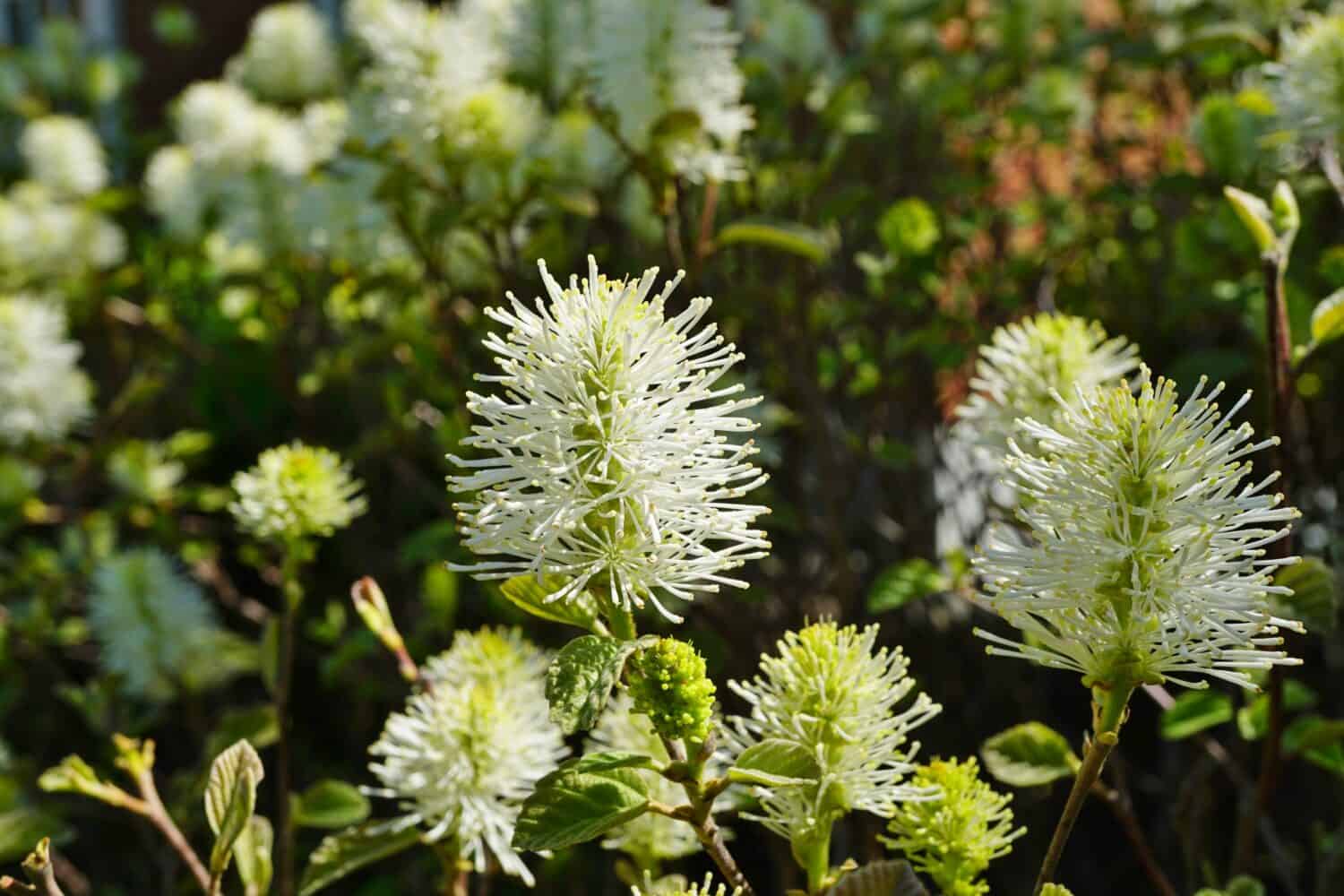
Enjoy these unusual but beautiful flowers every spring when you plant a
Fothergilla gardenii.
©EQRoy/Shutterstock.com
9. Elderberry
If you find yourself buying a lot of elderberry syrup during cold and flu season, you may consider planting your own elderberry (Sambucus nigra) shrubs! It is native to parts of Africa, Europe, and Asia but thrives in zone 5 partial shade. Depending on the species, they can reach up to twenty feet high and wide. Its fragrant flowers and beautiful fruit attract wildlife, birds, and pollinators.

Elderberry shrubs make excellent hedges and provide an abundant supply of edible berries. But the berries are best cooked rather than eaten raw.
©iStock.com/redstallion
10. Gray Dogwood
The term “dogwood” typically conjures images of stunning flowering dogwood trees. However, this plant family has shrubs and trees. One of the shrubs is gray dogwood (Cornus racemosa), which tolerates partial shade. It grows up to fifteen feet tall and wide and has lovely white flowers. This shrub is native to Eastern North America and attracts birds and pollinators.
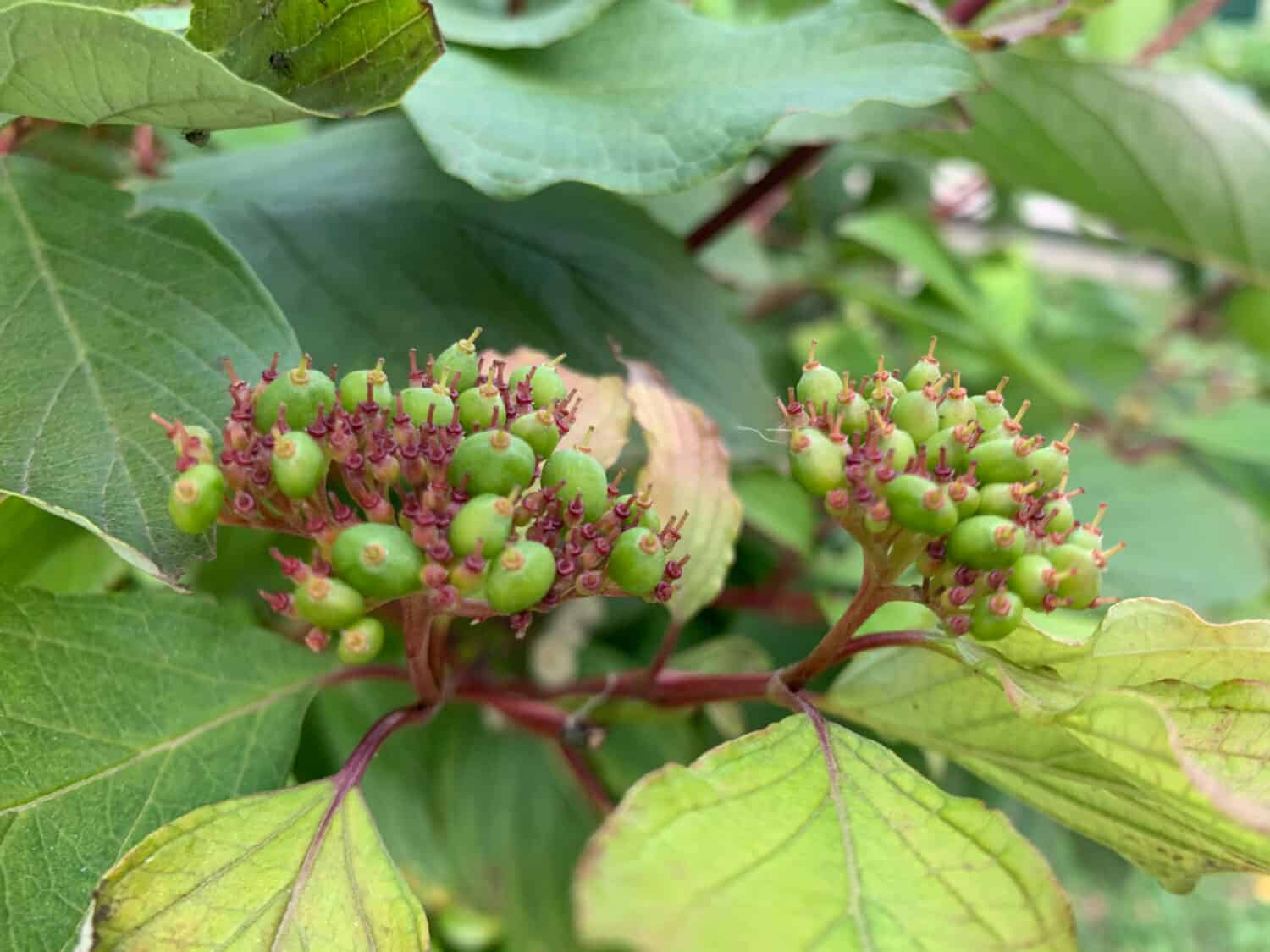
is one of the shrubs in the dogwood family.
©Olga Ganovicheva/Shutterstock.com
11. Mock Orange
Mock orange (Philadelphus coronarius) is a member of the Hydrangeaceae family. It gets up to twelve feet tall and wide, which makes it ideal for a large hedge or border. Its fragrant white flowers attract a range of butterflies when they bloom in the spring. This shrub is native to parts of Europe and will thrive in a zone 5 shade garden.

Mock orange shrubs develop lovely and highly fragrant white flowers every year.
©Iva Vagnerova/Shutterstock.com
12. Red Buckeye
Red buckeye (Aesculus pavia) shrubs are native to North America. Their significant size (up to fifteen feet tall and wide) makes them the perfect hedge or privacy screen. Its bright red, stunning blossoms arrive in the spring and attract pollinators like hummingbirds.
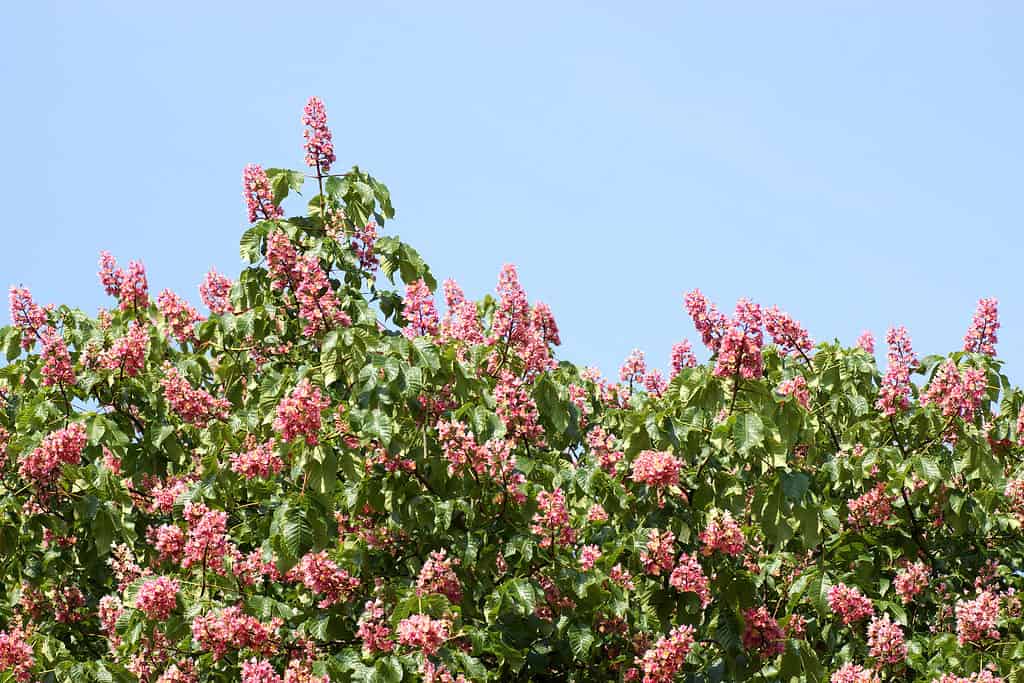
Red buckeyes are large shrubs that can reach heights of fifteen feet. They make the ideal privacy screen or hedge for your property.
©Bildagentur Zoonar GmbH/Shutterstock.com
13. Rhododendron
Rhododendron (Rhododendron spp.) also goes by the common names rosebay and azalea. The plant family is native to Asia and North America and is part of the Ericaceae (blueberry) family. They grow up to 10 feet high and 8 feet white and thrive in partial shade. Additionally, hummingbirds love their flowers. Please note this plant is toxic and should not be planted around kids and animals.
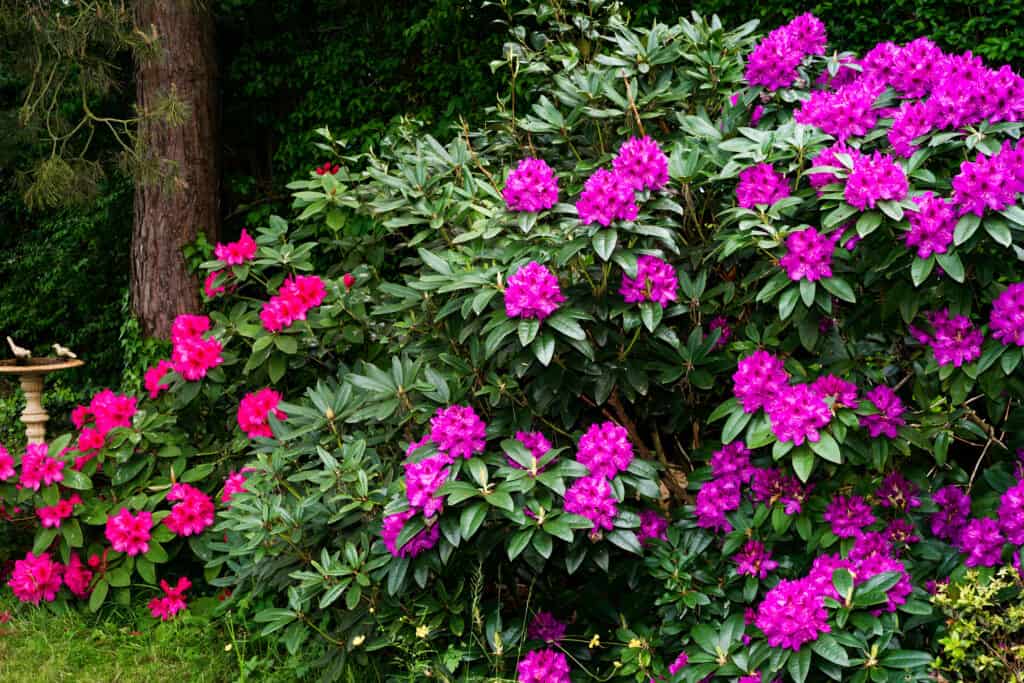
Rhododendrons are large, striking shrubs with gorgeous flowers. Beware, however, since this plant family is toxic to humans and pets.
©iStock.com/Jean-Luc Farges
14. Weigela
This stunning shrub is native to Korea, North China, and Japan and belongs to the Caprifoliaceae (honeysuckle) family. Weigela (Weigela florida) thrives in partial shade, making it the perfect addition to a zone 5 shade garden. The parent plant grows up to ten feet tall and twelve feet wide. But many of the cultivars are significantly smaller, so you should be able to find one that works in your space.

Hummingbirds adore the flowers that arrive on weigla shrubs every year.
©Nahhana/Shutterstock.com
15. Western Serviceberry
This gorgeous shrub is a member of the Rosaceae (rose) family and is native to parts of Canada, the northwest, and parts of the Rocky Mountain region. Western serviceberry (Amelanchier alnifolia) has a long history of providing food to local wildlife and indigenous people. Its berries can be used instead of other fresh berries in baking and cooking preparations. Its gorgeous white flowers attract butterflies and birds.
The Western Serviceberry thrives in full shade, partial shade, and partial sun. It grows up to 18 feet tall and 10 feet wide.
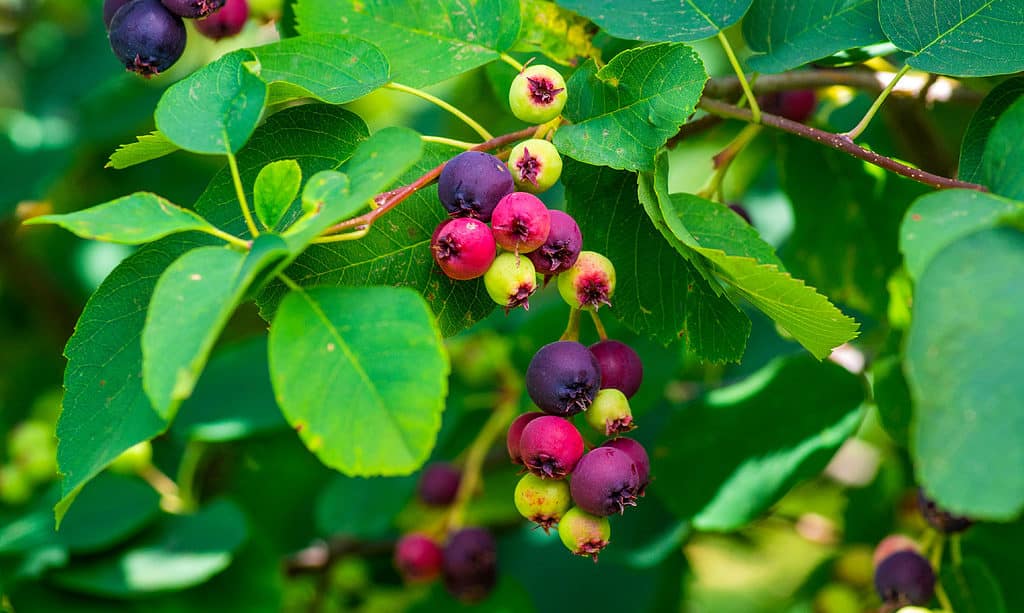
The western serviceberry has delicious edible fruit and thrives in partial shade.
©Iva Vagnerova/Shutterstock.com
Summary of 15 Shrubs That Thrive in Zone 5 Shade Gardens
| Number | Shrub |
|---|---|
| 1 | Alpine Currant |
| 2 | Arrowwood Viburnum |
| 3 | Barberry |
| 4 | Bush Honeysuckle |
| 5 | Canadian Bunchberry |
| 6 | Checkerberry |
| 7 | Clethra |
| 8 | Dwarf Fothergilla |
| 9 | Elderberry |
| 10 | Gray Dogwood |
| 11 | Mock Orange |
| 12 | Red Buckeye |
| 13 | Rhododendron |
| 14 | Weigela |
| 15 | Western Serviceberry |
Thank you for reading! Have some feedback for us? Contact the AZ Animals editorial team.








